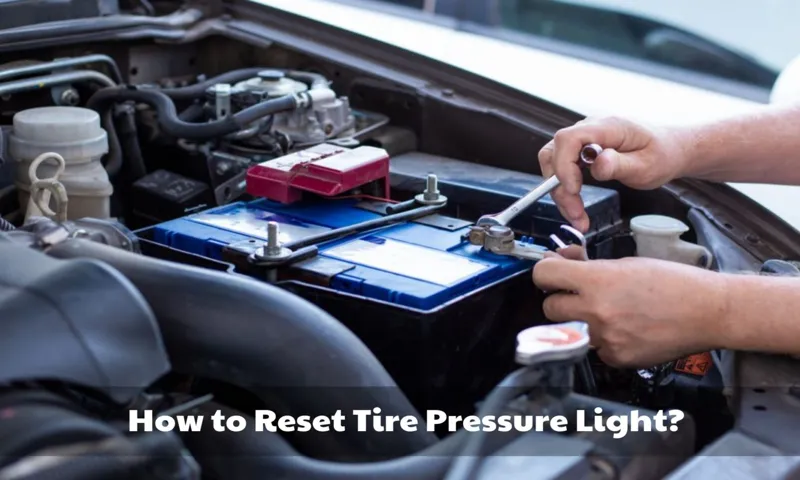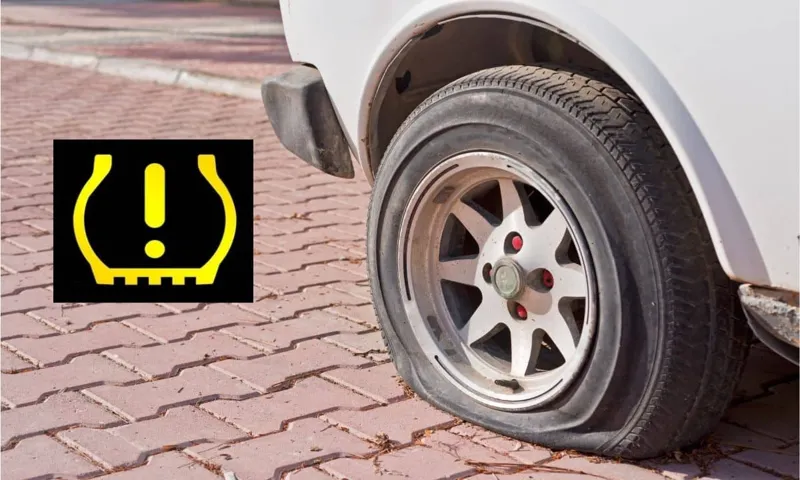Have you ever been driving down the road when suddenly your tire pressure light starts flashing? It’s a common experience that can leave many drivers scratching their heads in confusion. While it may seem like a minor inconvenience, ignoring a flashing tire pressure light can lead to bigger problems down the road. In this blog post, we’ll dive into why your tire pressure light might be flashing, what it means, and what you can do about it.
So sit tight and let’s get started!
Check Your Tire Pressure
If you’ve ever wondered why your tire pressure light is flashing, it’s time to check your tire pressure! The tire pressure monitoring system (TPMS) in modern cars is designed to let you know if your tire pressure is too low or too high. Driving with underinflated or overinflated tires can be dangerous, as it can lead to decreased handling, poor gas mileage, and even tire blowouts. Thankfully, checking your tire pressure is a quick and easy process.
Simply use a tire pressure gauge to measure the pressure in each tire and adjust as necessary. Keeping your tires properly inflated not only ensures your safety on the road, but can also save you money in the long run by improving fuel efficiency and extending the life of your tires. Remember to regularly check your tire pressure and avoid driving with a flashing TPMS light.
Use a Tire Pressure Gauge
Checking your tire pressure regularly is an essential part of vehicle maintenance. Using a tire pressure gauge can help you accurately determine the pressure in your tires. The recommended tire pressure can be found in your vehicle’s owner’s manual or on a sticker located on the driver’s side doorjamb.
With the tire pressure gauge, simply remove the valve cap from the tire and firmly press the gauge onto the valve stem. A reading will be displayed on the gauge, indicating the tire pressure. If the pressure is too low, inflate the tire with air until it reaches the recommended pressure.
If the pressure is too high, release air until it reaches the recommended level. By regularly checking your tire pressure, you can improve your vehicle’s fuel efficiency, prolong the life of your tires, and ensure that your vehicle handles properly. So, grab a tire pressure gauge and keep those tires inflated to the correct level!

Refer to Your Owner’s Manual
When it comes to properly maintaining your vehicle, one essential aspect to consider is checking your tire pressure regularly. This may seem like a small task, but it can have a big impact on your car’s performance and fuel efficiency. To ensure you’re filling your tires to the manufacturer’s recommended pressure, be sure to refer to your owner’s manual.
It will provide you with the information you need to find the correct pressure for your specific make and model. It’s important to note that overinflating or underinflating your tires can lead to several issues, such as poor handling, increased tire wear, and reduced fuel economy. By checking your tire pressure regularly and following the guidelines set forth in your owner’s manual, you can ensure your car is running efficiently and safely on the road.
Common Causes of a Flashing Tire Pressure Light
If you’ve ever been driving down the road and noticed your tire pressure light flashing, you’re not alone. This warning light can be triggered by a range of issues, including low pressure in one or more tires, a malfunctioning sensor, or even a damaged tire. If the light continues to flash, it’s important to check the air pressure in your tires as soon as possible to prevent any potential damage.
Low tire pressure can lead to poor handling, reduced fuel economy, and even blowouts in extreme cases. Additionally, it’s important to make sure that your tires are in good condition, and that they are rotated and balanced regularly to promote even wear. By taking these steps, you can help ensure safer, more efficient driving and reduce the risk of a flat tire or other issues on the road.
So, next time your tire pressure light starts flashing, don’t ignore it – take action to ensure your safety and the health of your vehicle.
Low Tire Pressure
Low Tire PressureIf you are driving and suddenly the tire light on your dashboard starts flashing, it can be an alarming experience. There are several reasons why the tire pressure light might illuminate, and often, it indicates that something is wrong with your car’s tires. One common cause of a flashing tire pressure light is low tire pressure.
Tire pressure changes with the temperature, so if the weather is cold, your tires might lose pressure more quickly. Additionally, punctures, cracks, or damage on the tire could eventually lead to leaks and result in low tire pressure. If you notice that your tire pressure light is on, make sure to check the tires’ pressure and inflate them if needed, as low tire pressure could cause poor handling, lower gas mileage, and tire failure.
By making sure your tires have the proper air pressure, you can ensure a safer and smoother ride on the road.
Temperature Changes
When you see the tire pressure light on your dashboard flashing, you might be wondering what’s causing it. One common reason for this alert is temperature changes. When it’s cold outside, the air inside your tires contracts, causing the air pressure to drop.
Similarly, when it’s hot out, the air expands, increasing the pressure in your tires. These changes can trigger the flashing tire pressure light, indicating that your tires need some adjustment. So, before you panic, make sure to check your tire pressure and adjust it accordingly.
It’s essential to keep your tires inflated correctly, not only to avoid the annoying alert but also for your safety on the road. Properly inflated tires will provide better handling, fuel efficiency, and longer tire life.
Faulty Tire Pressure Sensor
If you’ve ever had your tire pressure light suddenly begin to flash, it can be a bit disconcerting. There are several common causes of a flashing tire pressure light, with one of the most frequent being a faulty tire pressure sensor. This small but vital component of your car’s tire pressure monitoring system can become damaged over time or stop functioning altogether.
When this happens, it can lead to inaccurate readings and ultimately trigger the flashing light. While a faulty sensor is a possible culprit, there are other potential causes that should be checked before assuming the sensor is the problem. These could include a punctured tire, a slow leak, or an issue with the tire valve stem.
It’s important to address any issues as soon as possible to ensure a safe and smooth driving experience.
What to Do When the Light Continues to Flash
Have you ever found yourself perplexed by the flashing of your tire pressure light? If so, don’t worry, you’re not alone. This warning light is designed to alert you when there is a problem with the air pressure in your tires. Low pressure can lead to reduced handling, less fuel efficiency, and even increased wear and tear on your tires.
If the light continues to flash after filling up your tires, it’s possible that there is an underlying issue that needs to be addressed. This could include a leak in your tire, a malfunctioning pressure sensor, or simply an improperly calibrated system. Whatever the cause, it’s important to take action as soon as possible to ensure that you stay safe on the road.
A visit to your local mechanic or tire shop can help you diagnose and fix any problems that may be causing the light to continue flashing. So, don’t ignore this warning sign and take action to address your tire pressure issues today.
Do Not Ignore the Light
As a driver, it’s important to pay attention to warning lights on your dashboard. The most common, and arguably most important, warning light is the check engine light. Ignoring this light can result in serious damage to your vehicle and may even lead to accidents in some cases.
If your check engine light continues to flash, it’s time to take action. Don’t just hope that it’ll go away on its own. Instead, take your vehicle to a trusted mechanic who can diagnose the issue and make any necessary repairs.
It’s tempting to ignore warning lights, especially if you’re busy or don’t want to deal with the hassle of repairs, but it’s not worth the risk. Just like how we shouldn’t ignore warning signs in our health, we shouldn’t ignore the warning lights in our cars. Keeping up with regular maintenance and addressing issues as soon as they arise can save you time, money, and potentially even your life on the road.
Check Your Tires Again
If you find that your tire pressure light continues to flash even after you’ve checked and inflated your tires, there are a few things you can do. First, double-check the pressure in your tires to ensure that they are all properly inflated. If everything checks out okay, it’s possible that your tire pressure monitoring system (TPMS) is malfunctioning, and you should take your vehicle to a repair shop to have it checked out.
Another possibility is that there is a slow leak in one of your tires that is causing the pressure to regularly drop below the threshold set by your TPMS. In this case, you’ll want to take your car in for service to have the leak repaired before it turns into a more serious problem. By taking care of your tires and addressing any issues with your TPMS, you’ll be ensuring the safety and longevity of your vehicle.
Conclusion
It’s simple, really. Your tire pressure light is flashing because your car is trying to tell you that your tires are feeling a little deflated. Much like an annoyed coworker tapping you on the shoulder to remind you of a task you’ve been putting off, your car’s warning light is attempting to get your attention and encourage you to take action before a potentially dangerous situation arises.
So, inflate your tires and let your car know that you’re an attentive and responsible driver. After all, your car deserves the same respect and consideration as your coworkers (maybe even a little more, since it’s the one getting you safely from point A to point B).
FAQs
What does the tire pressure light flashing mean in my car?
The tire pressure light flashing means that one or more of your car’s tires have low pressure.
Why is the tire pressure light flashing even though the tires are properly inflated?
The tire pressure sensor may be malfunctioning or there could be a problem with the electrical system in your car.
How do I reset the tire pressure light in my car?
You can reset the tire pressure light by using the reset button on your dashboard or by disconnecting the car battery for a few minutes.
Will driving on low tire pressure damage my car?
Yes, driving on low tire pressure can cause damage to your car’s tires and wheels, as well as affect your car’s handling and fuel efficiency.
How often should I check my car’s tire pressure?
It is recommended to check your car’s tire pressure at least once a month or before long road trips.
Can I rely on the tire pressure monitoring system in my car to always be accurate?
No, it is important to physically check your car’s tire pressure with a tire gauge as the sensor system may not always be accurate.
Is it safe to drive with the tire pressure light flashing?
It is not recommended to drive with the tire pressure light flashing as low tire pressure can affect your car’s handling and safety.

